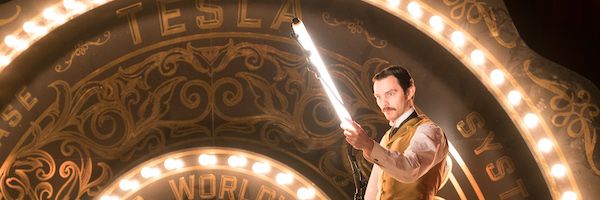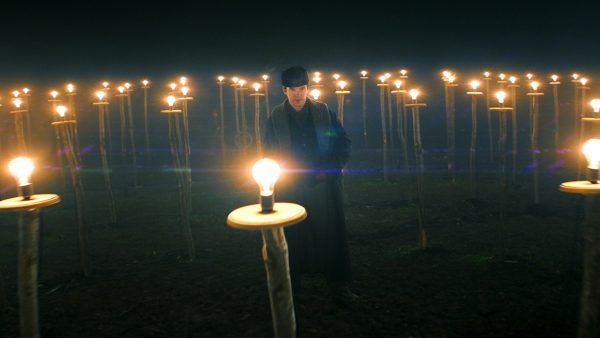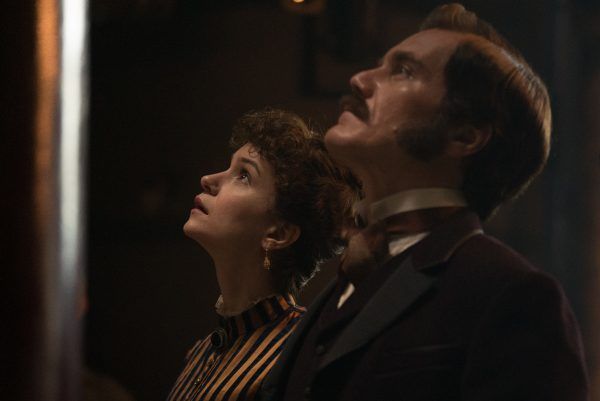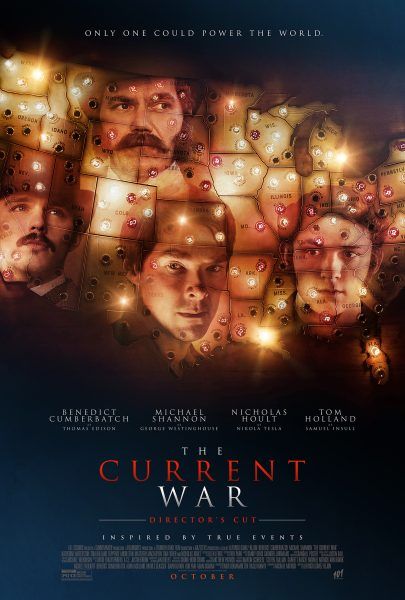A little over two years ago, I saw The Current War at the 2017 Toronto International Film Festival. I did not care for the film and found that despite the impressiveness of the craft, the story felt unfocused as it tried to weave in too many themes without really finding a cohesive narrative to build upon. When the film’s distributor, The Weinstein Company, collapsed due to the sexual assault allegations against its co-founder Harvey Weinstein, director Alfonso Gomez-Rejon was able to recut his movie. Although I don’t perfectly remember a movie I saw over two years ago, I feel that The Current War: Director’s Cut just works better. It appears that Gomez-Rejon has found a way to streamline his narrative despite only shaving six minutes off the runtime. Whatever reordering and recutting he’s done to the film has helped better illuminate the story as a business conflict. Although there are still a handful of shortcomings, they don’t weigh as heavily on this new version, which never loses its energy.
The story begins in 1880 where Thomas Edison (Benedict Cumberbatch) has finally perfected his lightbulb and plans to illuminate cities across the country using direct current, which requires a heavy investment due to putting copper wires and generators underground. Rival businessman George Westinghouse (Michael Shannon) believes the future is alternating current, which is more powerful, cheaper, and can cover greater range, which is beneficial to a country like the United States, which has large rural areas. He hopes that there might be a partnership where Edison supplies the bulbs and Westinghouse provides the power, but Edison refuses to cede any ground, setting up a battle throughout the remainder of the 19th century over who will get to power the future.
The biggest problem with the original cut of The Current War was how sprawling it felt. Part of that issue is seeing a movie at a film festival where you’re already exhausted and in the case of Current War, it was the last movie I saw of the day, so that’s an uphill battle that the Director’s Cut didn’t have to fight. But even without that difficulty curve, the new version is better equipped to know what kind of story it’s telling, which is a business battle. As I recall, the original version tried to have it both ways with Edison, positioning him as both an inventor and a businessman when it was abundantly clear that he was really more a businessman. By putting less emphasis on hailing him as a great inventor and more as a ruthless business titan, we get a clearer picture of the conflict between Edison and the more scrupulous Westinghouse who believes he can win by simply offering a superior product.
Once you’ve got a clear picture on the business conflict, everything else starts to fall into place. In the original cut, the movie didn’t really know what to do with futurist and inventor Nikola Tesla (Nicholas Hoult), who popped in and out of the movie almost at random with not much bearing on the story. But if you position The Current War as a business conflict, then Tesla’s thematic role becomes much clearer as the movie shows that Westinghouse’s best-product-wins belief is the past, Edison’s duplicity is the future, and simply being the most intelligent person in the room like Telsa is no defense against these business interests.
My biggest complaint with The Current War is that it doesn’t go far enough. Despite its modern flourishes with its craftsmanship to avoid feeling like a stodgy period piece (Chung-hoon Chung’s cinematography is, as always, electrifying), Gomez-Rejon is still a bit shy in connecting the heart of the movie—the invention of modern business—from its conclusion, which is still focused on literal inventions and innovations. The anti-climactic conclusion of the film still feels a bit underwhelming. The ending misses that the narrative of the movie is really a battle in a much larger war of American capitalism and how it operates, so it’s frustrating to see Gomez-Rejon and screenwriter Michael Mitnick miss the forest from the trees.
But I can’t deny that the overall film works much better than before. It feels like the engaging, up-tempo, compelling historical drama it was meant to be before the narrative was spread into too many different directions. Yes, at the end of the day, this is about which wealthy white guy will get to be even richer and I think Gomez-Rejon lacks the acerbic bite to really make that come through, but I also can’t deny that I had more fun watching The Current War this time around. Almost everything clicks better from the performances to the pacing to the overall story. It’s not a completely different movie, but I was amazed at how much better it worked for me without any drastic changes.
Rating: B




